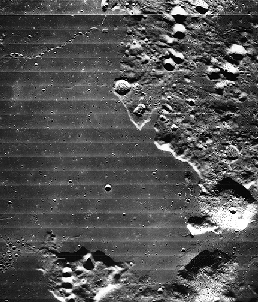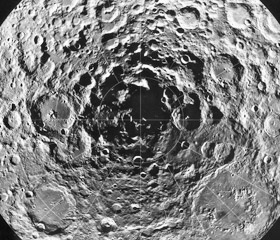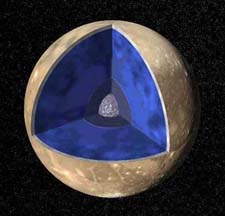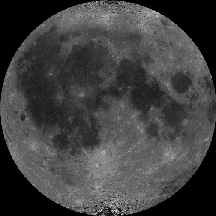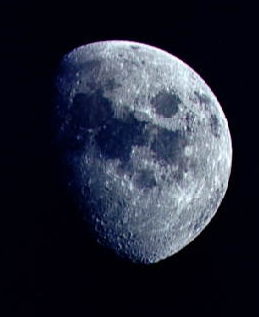
NASA.
The Earth's Moon
The Earth's one natural satellite, the Moon, is more than one quarter the size of Earth itself (3,474 km diameter), making the Earth-Moon system virtually a double-planet. Because of its smaller size, the Moon's gravity is one-sixth of the Earth's gravity, as we saw demonstrated by the gigantic leaps of the Apollo astronauts.While there are only two basic types of regions on the Moon's surface, there are many interesting surface features such as craters, mountain ranges, rilles, and lava plains. The structure of the Moon's interior is more difficult to study. The Moon's crust, the top layer, is a rocky solid. Below the crust is the mantle which consists of a denser rock. Together, the crust and mantle form the Moon's lithosphere, which is very thick (perhaps 800 km) compared to the Earth's lithosphere. Beneath the lithosphere is a partially molten zone. Although it is not known for certain, many lunar geologists believe the Moon may have a small iron core, even though the Moon has no measurable magnetic field. By studying the Moon's surface and interior, geologists can learn about the Moon's geological history and its formation.
The footprints left by Apollo astronauts will last for centuries because there is no wind on the Moon. The Moon does not possess any atmosphere, so there is no weather as we are used to on Earth. Because there is no atmosphere to trap heat, the temperatures on the Moon vary dramatically over the course of a day, from 100° C at noon to -173° C at night.
The Moon doesn't produce its own light, but looks bright because it
reflects light from the Sun. Think of the Sun as a light bulb, and the
Moon as a mirror, reflecting light from the light bulb. The lunar phase changes as the
Moon orbits the Earth and
different portions of its surface are illuminated by the Sun.





